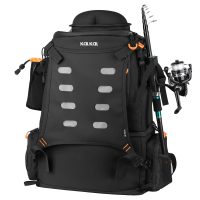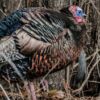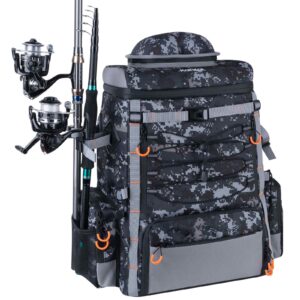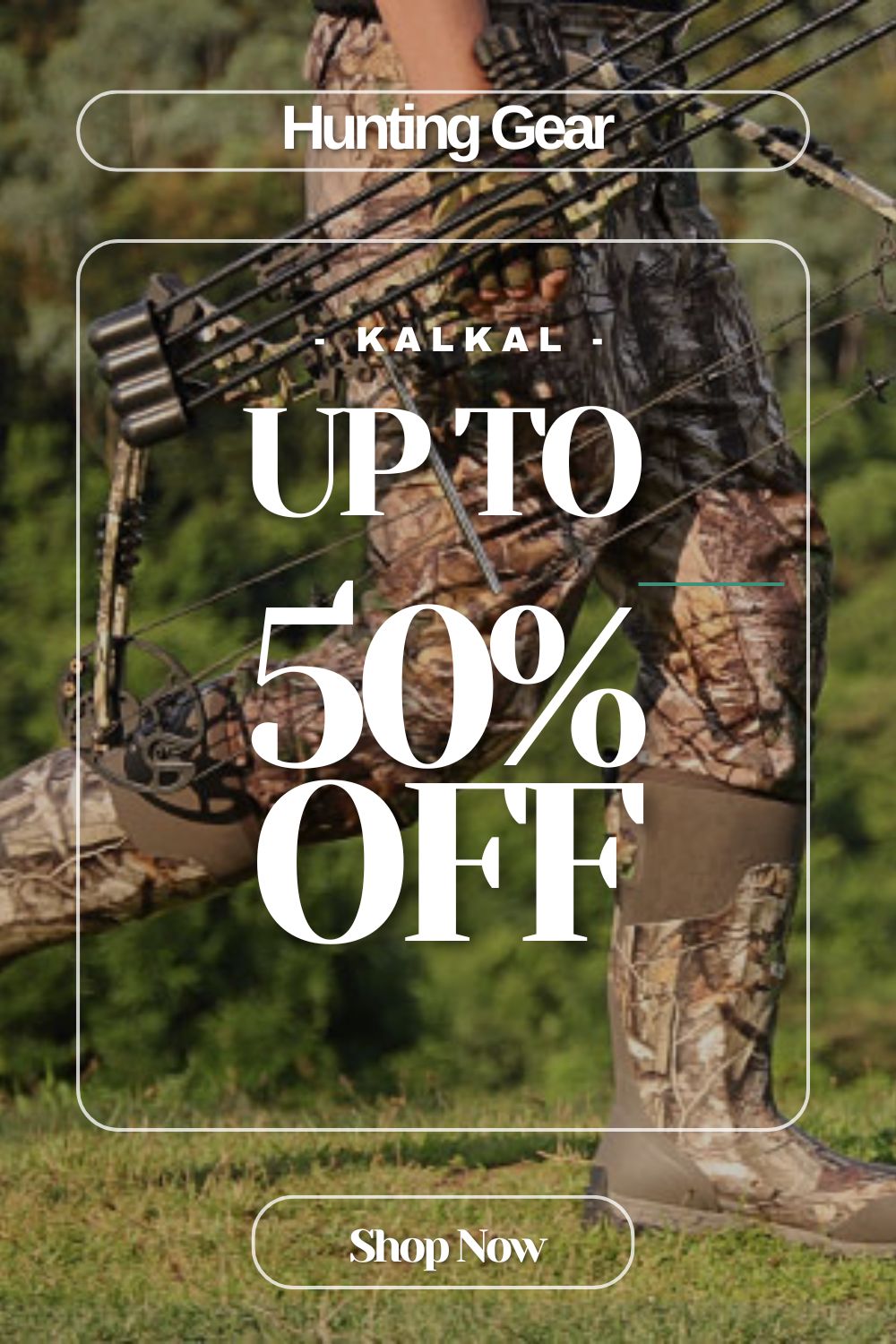Getting a much-needed hunting license in Wyoming is not a very easy task, especially for those who want to hunt some of the more popular big game animals such as elk or moose. An explanation of Wyoming preference points system and how it can be best capitalized on will ultimately lead you to draw a permit.
In this guide, we’ll touch on the fundamentals of Wyoming’s preference points, how the system works, and how to ‘stack the deck’ in your favor in the quest for putting more points on your account.
Finally, we would also introduce other states that use such systems and give helpful information on how one can successfully apply for it.
What Are Preference Points?
Preference points are points that are added to an applicant’s record in an attempt to improve their chances of drawing a limited entry hunt permit, which targets highly demanded areas that allow few hunters to hunt.
Purpose of Preference Points
The primary intent behind preference points is to provide help to the applicants who routinely apply for the hunts but do not get selected so that they can increase their chances of winning a particular permit in the subsequent draw years.
Preference points are essential to prevent the formation of an unfair hunting ground for the hunters. They promote the idea of loyalty and patience as the frequent applicants will be given priority on their applications. These points are especially important for the quotas or when hunting in the most popular and restrictive territories.
Why Hunters Need Them?
Bidder’s choice is the key to increasing the chances of obtaining permission to hunt in the best sites. Without it, it would be almost impossible to get permits for very much-in-demand areas because the number of permits is significantly lower than people want to hunt there.
Difference Between Preference Points and Bonus Points
- Preference Points: These prioritize hunters with the most points, guaranteeing a permit to those with the highest tally.
- Bonus Points: These act more like raffle tickets; each point increases the odds but does not guarantee success. Bonus points introduce an element of luck into the draw.
How Do Wyoming Preference Points Work?
In Wyoming, the preference points help rank applicants and give better opportunities to those hunters who have a higher number of points and have more chances to draw limited-entry tags for big game hunting.
75% of the available licenses for each hunt area will be assigned to hunters with preference points. The other 25% of licenses will be given out randomly, without considering preference points.
These points can be earned when a hunter applies unsuccessfully or when he or she chooses to join the preference point program based on the annual price.
How Many Points Are Needed for Big Game Hunts?
The number of points required to draw a tag varies by species and hunting units:
- Elk: Trophies that would be classified as singles, or versus, that have high success rates or are simple usually need more points, and normally anything 4- 10 or above.
- Deer and Antelope: These usually involve between 1 and 5 key points in most units of learning.
- Moose and Bighorn Sheep: These premium hunts require more points with some hunting expeditions going for 15+ years worth of points.
Every species and unit has its elk population and its unique demands, The Game and Fish Department of Wyoming has published a draw of odds annually to facilitate hunters.
Also, Wyoming applies different rules based on the species:
- 50/50 Split: For species such as elk, deer, and antelope, half of the tags are distributed through points while other halves are raffled.
- Hunters need to begin applying within given dates while non-residents may be allowed fewer units for highly sought-after allotments.
How to Check Your Points?
Hunters who wish to find out their preference point totals should visit the Wyoming Game and Fish Department’s website and log into their accounts.
Points get invalid after two years of non-use (you do not apply for a hunt or purchase points).
If one wishes not to lose the hard-earned points or dollars, then he/she should ensure that applications or purchases occur annually.
How To Apply For Preference Points In Wyoming?
The preference points are very helpful for hunters in Wyoming who would love to hunt big game such as elks, mule deer, moose, and bighorn sheep. They enhance your vulnerability to drawing licenses in future years and therefore better opportunities to hunt in specific areas.
Here is a step-by-step guide on how to apply for preference points, if you can buy them directly, important tips, and ways to increase your chances of being considered.
Step-By-Step Guide to Apply for Preference Points
- Understand the System
Wyoming has a preference points system that favors consistent applicants. Hunters gain points as they move down the years to draw permits for limited-quota species hunting.
- Set up a Login for the Wyoming Game and Fish Department
Begin with self-registration through the website of the Wyoming Game and Fish Department. This will enable you to monitor your preference points and also to apply for a license.
- Choose the Species
There are preference point options for either sex of elk, deer (mule and white-tailed), antelope, moose, bighorn sheep, and mountain goats. Choose what species you want to go for.
- Apply Online
Go to the preference points application section after you have logged in to your account. Choose the species you wish to breed and pay for the species accordingly. The general application windows range annually from the 1st of July through to the end of October.
- Pay the Fee
They differ for different animals and whether one is a resident or a non-resident. Non-residents get more points for elk than deer and antelope at a higher cost.
- Confirm Your Application
After payment, expect to receive a confirmation email. This serves as a confirmation of your preference point purchase.
Can Hunters Directly Buy Preference Points?
Yes, individual preference points can be bought by hunters without participating in a draw for a hunting license. Besides, this is the most suitable way of compiling points for future purposes since the spirit of applying for it is justified.
However, you must apply after the given preference points window has been opened to get preference points added. Failing to make the deadline is equal to losing the opportunity to buy points during that specific year.
Things You Should Know When Buying Preference Points
- Points Expire After Two Years of Inactivity: If you don’t buy a preference point or apply for the draw for two consecutive years, all accumulated points will be lost.
- Separate Applications for Each Species: Preference points are species-specific. Buying points for elk doesn’t contribute to your chances for deer or antelope.
- Non-Refundable Fees: Once purchased, preference points fees are non-refundable, even if you don’t draw a license in subsequent years.
- Points Don’t Guarantee a License: While preference points improve your odds, they do not guarantee a license. Some species, like moose and bighorn sheep, remain highly competitive despite multiple points.
Tips to Successfully Apply for Preference Points
- Apply Early: Prepare in advance – do not leave everything to the very end. Stating goals early decreases the chances of technical hitches or forgetting the due date.
- Prioritize High-Demand Species: Find species that are acclaimed but are available in discounted numbers. Spend points for these to enhance your long-term hunting capability.
- Check Application Deadlines: There are considerable differences between the application windows of preference points and the hunting license in Wyoming. Always have relevant knowledge to ensure you do not miss important opportunities.
- Plan for the Future: Especially save up for hunts you wish to carry out in the next 5-10 years. This provides one with an opportunity to prepare and set for the hunter’s dream hunt.
- Use Professional Guidance: Perhaps speaking to outfitters or hunting specialists might prove useful when it comes to trying to fine-tune your application strategy and point usage.
- Combine Points with Groups: They must also add up if you’re hunting with friends or in a group, try to have your points align with them. They identified that Wyoming permits group applications that enhance shared opportunities.
What States Apply Preference Points in Hunting?
Besides Wyoming, several states in the U.S. employed such a system, called the preference points system to disburse the few accessible hunting tags more equitably.
Like most deer tag drawing systems, the premise involves assembling points to raise the likelihood of a draw; however, the policies can differ substantially between states. Here are a few examples:
States That Use Preference Points In Hunting
1. Colorado
How it Works: Colorado’s preference points system awards one point for each year you apply for a license and don’t draw a tag. Points are specific to a species and sometimes even specific to particular units or seasons.
- In Colorado, some high-demand hunts (like trophy elk units) require many points to draw.
- If you draw your first-choice license, your points for that species are reset to zero.
- Points expire if you don’t apply for a point or hunt license for 10 consecutive years.
2. Utah
How it Works: Utah combines a preference points system with a bonus points system. Preference points are used for general season deer hunts, while bonus points apply to limited-entry and once-in-a-lifetime hunts.
- Preference points ensure you draw a general deer tag eventually.
- Bonus points increase your odds but don’t guarantee a tag for limited-entry hunts.
3. Nevada
How it Works: Nevada doesn’t use a pure preference points system. Instead, it uses bonus points, which slightly increase your chances every year you apply and don’t draw.
- Points are squared for each species, giving exponential benefits to long-time applicants.
- All applicants, regardless of points, have some chance to draw.
4. Montana
How it Works: Montana has a hybrid system where preference points are used for non-resident big-game combo licenses. Bonus points apply to limited-entry permits.
- Non-residents can buy preference points without applying for a license.
- Bonus points offer weighted odds but don’t guarantee success.
5. Arizona
How it Works: Arizona uses bonus points rather than preference points. Points increase the number of entries you have in the lottery for a tag.
- The system reserves 20% of tags for the highest-point holders.
- Hunters can earn points through loyalty programs and hunter education.
The rules vary significantly across states. Here’s a comparison of key aspects:
| Feature | Wyoming
|
Colorado | Utah | Nevada | Montana |
| Point Type | Preference | Preference | Preference & Bonus | Bonus | Preference & Bonus |
| Guaranteed Tags | Not guaranteed
|
Often required for top hunts | Guaranteed for general deer | Not guaranteed | Not guaranteed |
| Point Accumulation Deadline |
2 years of inactivity |
10 years of inactivity | No expiration | No expiration | No expiration |
| Species Specific? | Yes | Yes | Yes | Yes | Yes |
| Bonus vs Preference Points | Preference only | Preference only | Both | Bonus only | Both |
Conclusion
In conclusion, hunters planning to hunt in limited-entry states such as Wyoming must learn and understand the preference points system to acquire more preference points. Hunters can greatly improve their opportunities by updating species-specific rules, acting consistently in applications, and using numerous tips.
Whether submitting an application in Wyoming or looking at options in other states such as Colorado and Utah, it takes time and effort to make the dream become a reality in these highly sought-after locations.
More to know about hunting in Wyoming:





















Leave a reply